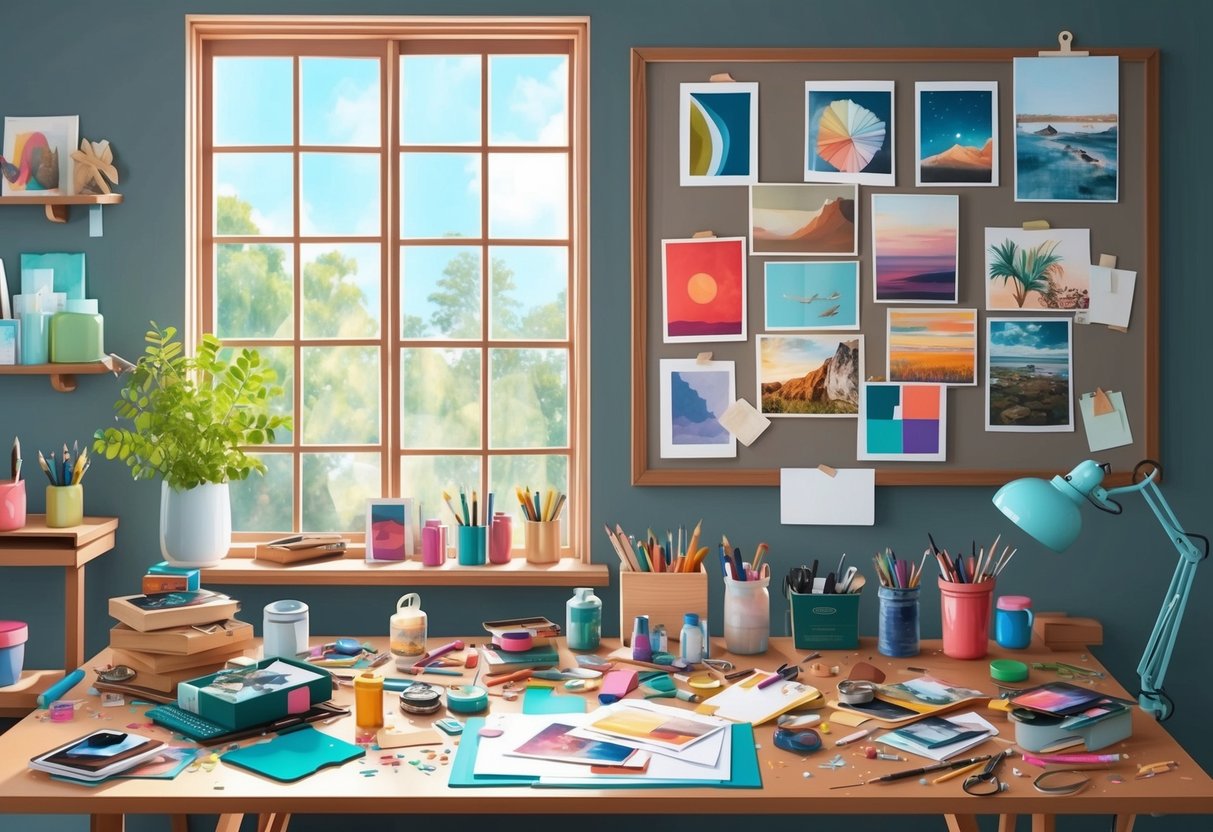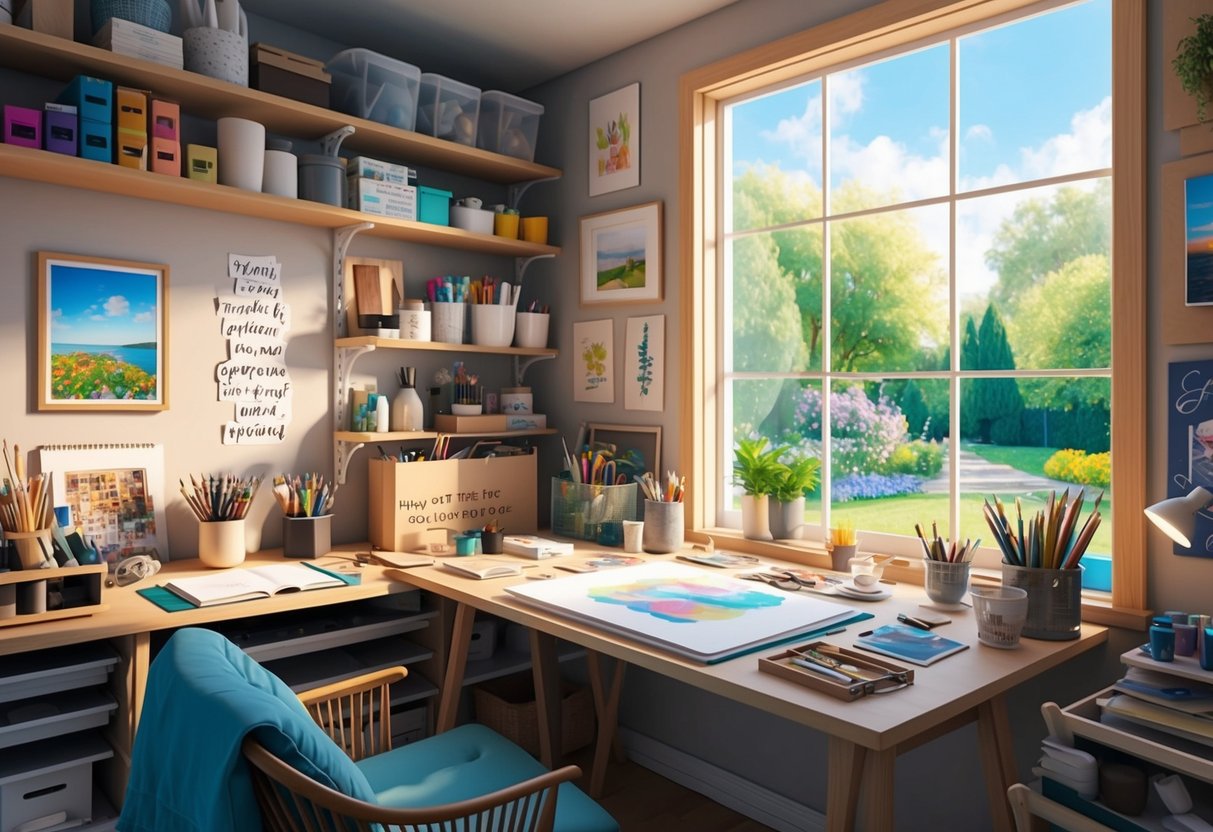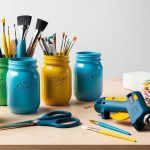
Sustaining Long-Term Motivation and Creative Energy

Maintaining creative momentum in crafting requires adapting routines, creating realistic goals, and managing energy well. Proactive strategies can help boost motivation, increase productivity, and bring new inspiration while preventing creative fatigue.
Dealing with Lack of Motivation
Creative professionals and hobbyists alike often struggle with motivation slumps. When energy dips, it helps to change the environment or daily rhythm.
Taking a mindful walk, for instance, can break mental ruts and refresh perspective. Sharing in-progress work with others also adds accountability and can spark valuable feedback.
Setting smaller, achievable goals helps reduce overwhelm. Tackling bite-sized tasks boosts confidence and creates a sense of progress.
Keeping a visual idea board or digital inspiration folder offers quick reminders of purpose and fresh concepts. Experimenting with new techniques or materials is another method for reigniting creative energy.
Research shows that trying different styles or mediums can bypass routine blocks and reawaken enthusiasm for crafting.
Building Productivity Without Burnout
Sustained productivity depends on balancing creative effort with realistic self-care habits. Overcommitting to ambitious daily targets can lead to exhaustion and loss of enjoyment.
Instead, using structured routines such as timed work sprints (like the Pomodoro Technique) maintains focus without draining energy. Staying organized is crucial.
Simple tools like to-do lists or habit trackers help prioritize essential tasks and monitor progress without adding stress. Breaking large projects into clear, logical steps streamlines work and provides interim rewards along the way.
Collaboration with others in creative communities or online forums enables knowledge exchange and offers encouragement. Feedback and new perspectives motivate further growth while easing the pressure of solo work.
It’s also essential to actively celebrate small wins, which helps fuel long-term motivation.
Taking Effective Time Out
Strategic breaks provide necessary rest and prevent burnout. Planned time outs allow creative energy to recharge, which benefits idea generation.
Short activities such as meditation, mindful breathing, or short walks can clear mental clutter and reset focus. It’s useful to schedule regular time away from crafting, whether that means a few minutes every hour or a dedicated creative break day each week.
Engaging in unrelated hobbies or simple relaxation supports overall well-being and can indirectly spark new ideas. Mindfulness practices, such as meditation or journaling, have been shown to reduce stress and improve creative cognition.
These routines not only restore mental energy but also cultivate resilience for future creative challenges.
Frequently Asked Questions
Creative block can disrupt daily crafting but there are clear steps, specific routines, and environment adjustments that help unlock creativity. Many crafters find inspiration boosts from structured activities, changing environments, and proven mental strategies.
What are effective techniques for overcoming a creative block in crafting?
Setting aside regular time for creative work helps break through resistance. Crafters benefit from establishing a simple daily routine that includes both idea generation and skill practice.
Some artists reflect on what triggers their block and experiment with new materials or techniques to regain momentum.
Can certain activities or exercises help in breaking through a creative block?
Activities like structured research, mindful sketching, or brief, timed sessions of brainstorming can nudge creative flow. Practicing quick craft exercises or collaborating on a small project with another creator can also open up new thought patterns and reduce pressure.
For detailed examples, practical tips from fellow creatives have been shared online.
How can one find inspiration to fuel creativity daily?
Daily inspiration often comes from diverse sources such as reading, visiting exhibitions, or joining creative communities. Many crafters keep an idea notebook or collect reference images to spark new ideas.
Meeting with creative friends or changing up daily routines can also introduce fresh perspectives, as suggested in articles about overcoming creative blocks.
What role does environment play in affecting an artist’s creative flow?
A tidy, well-lit, and dedicated workspace supports mental clarity and focus during crafting sessions. Some crafters adjust their environment by adding music, moving to a new location, or organizing supplies differently to encourage productivity.
Even minor changes like sitting near a window or rearranging materials can influence creative energy.
Are there any proven methods to prevent creative block from occurring?
Regularly refreshing skills, seeking feedback, and diversifying crafting projects can help prevent creative droughts. Many creators incorporate scheduled breaks, maintain a variety of supplies, and embrace failed attempts as learning opportunities.
Setting manageable goals keeps motivation high and makes it easier to stay productive.
How do time constraints impact creative block and what strategies exist to manage it?
Strict deadlines and limited free time often heighten anxiety and suppress creativity.
Artists who set realistic expectations and break projects into small steps experience fewer blocks.
Allowing for flexible schedules can also help.
Using time management techniques such as batching tasks or scheduling focused creative sprints can reduce pressure and maintain consistent progress.



